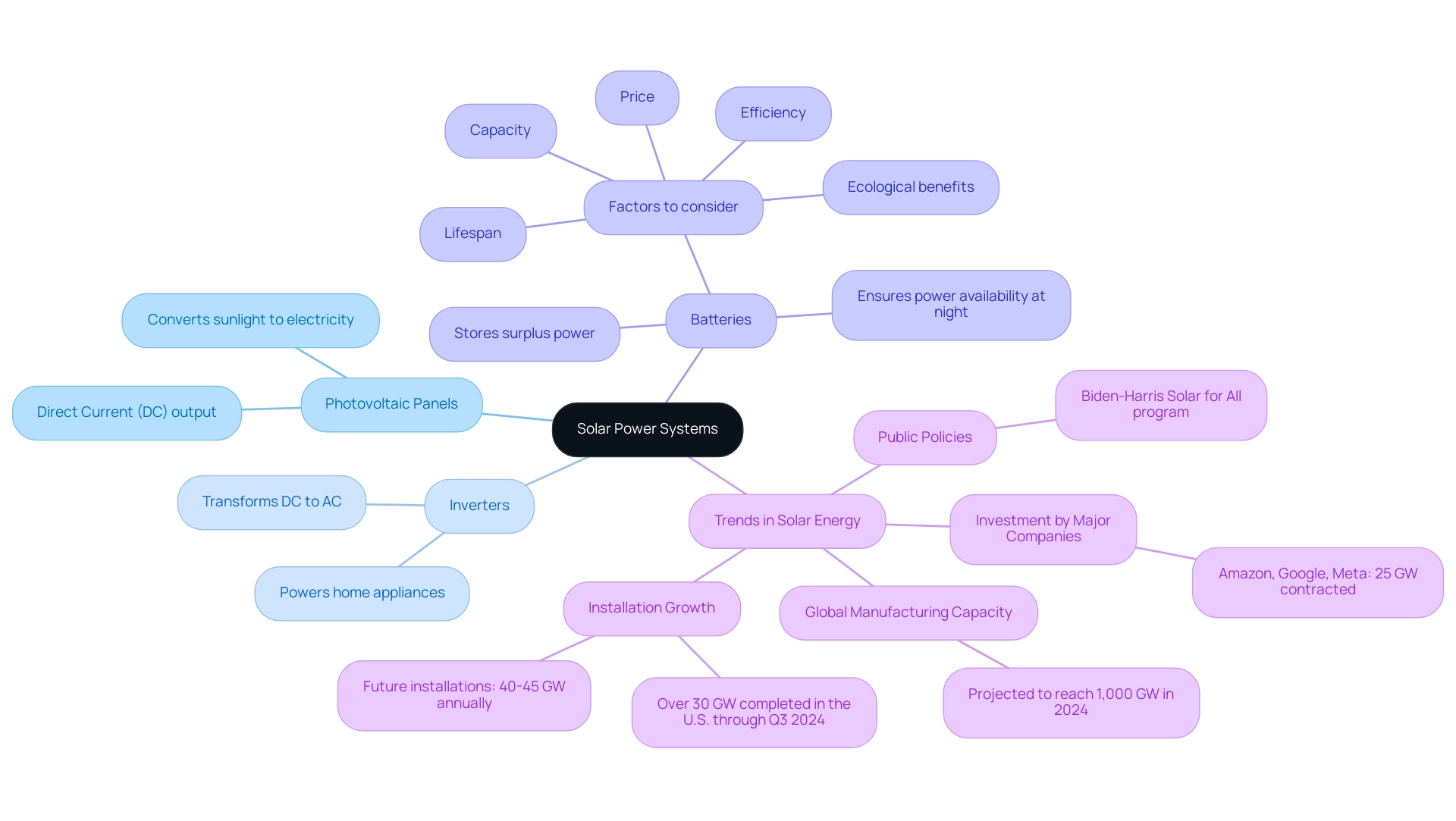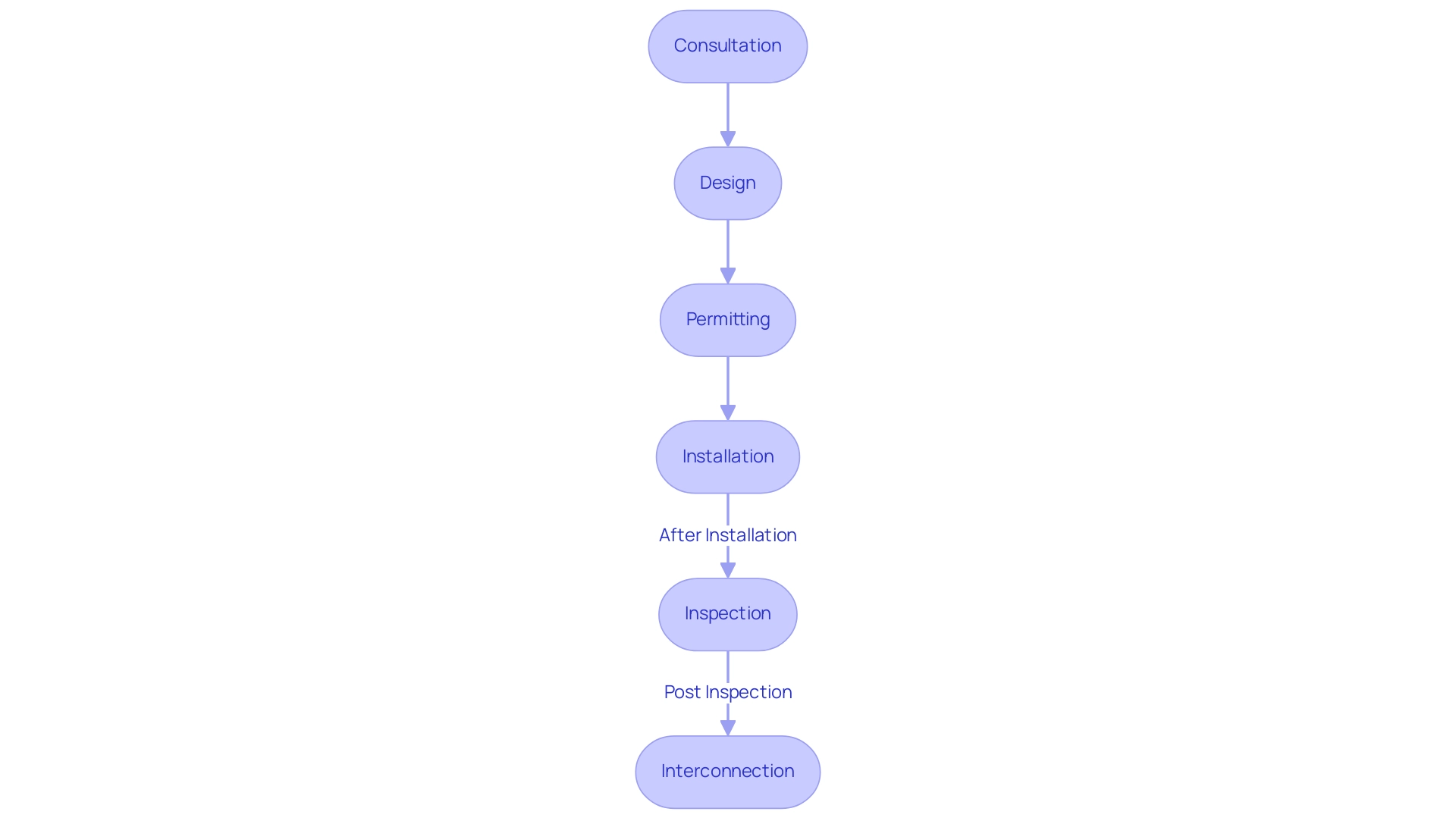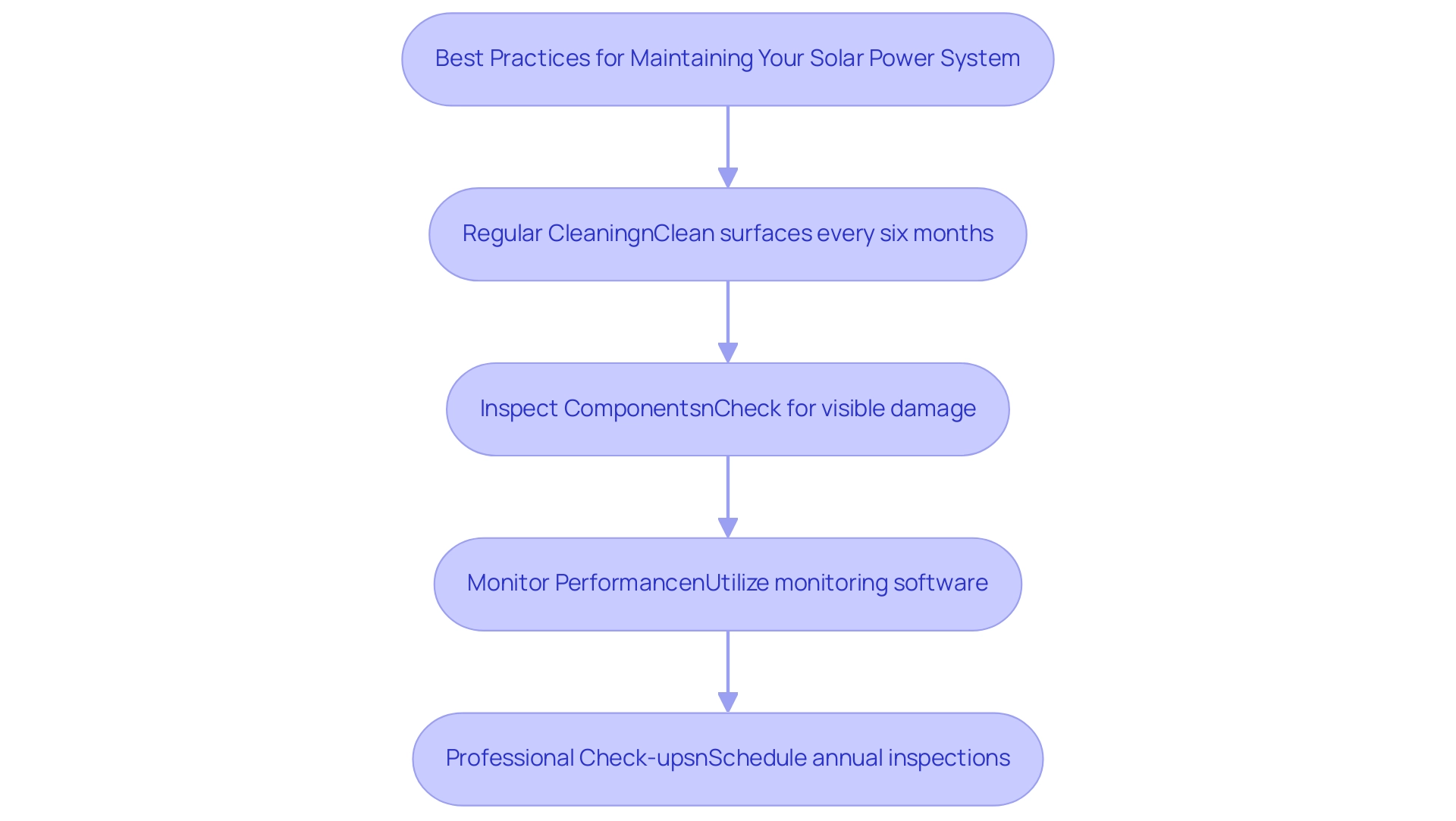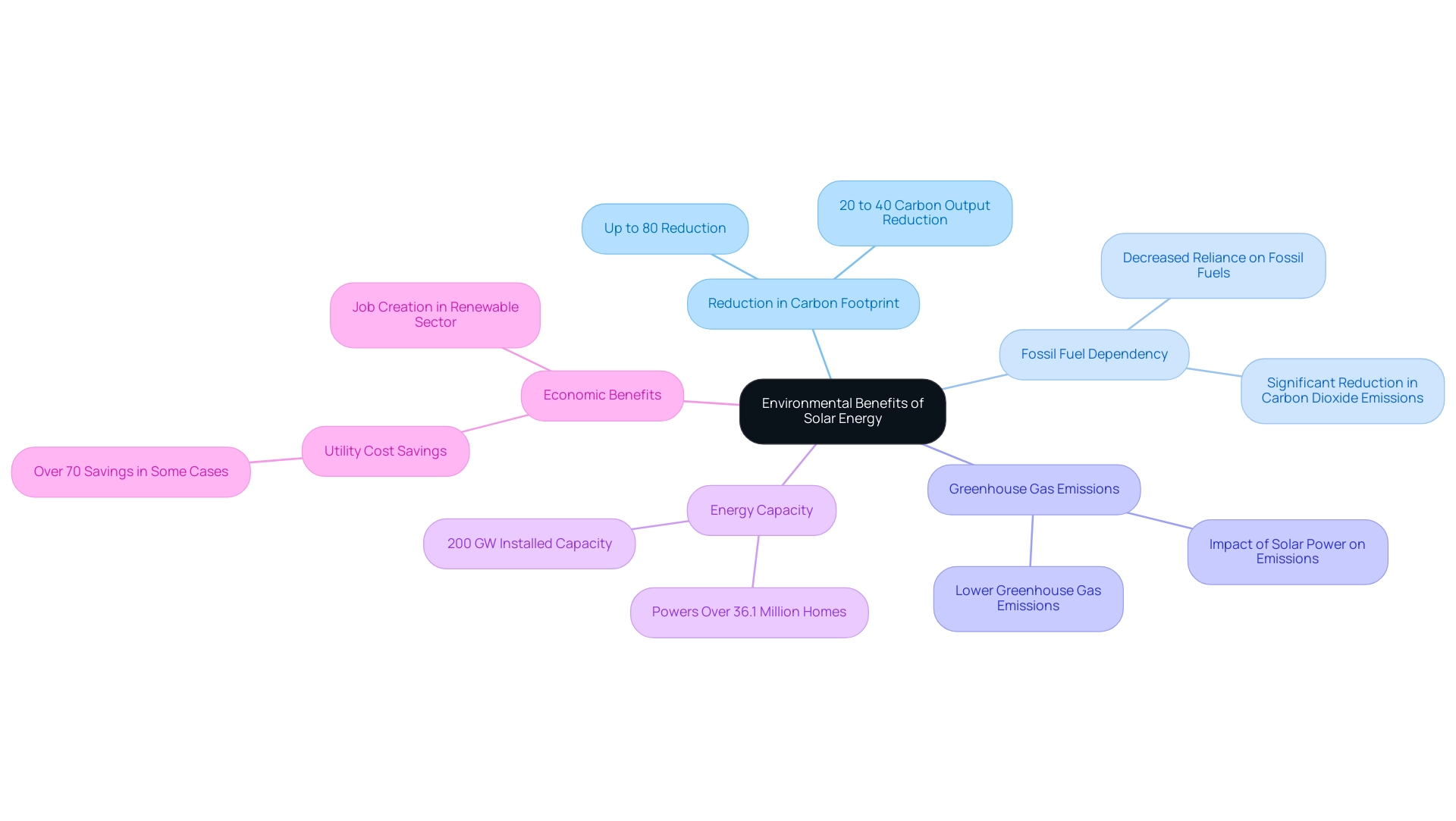Introduction
Harnessing the power of the sun is no longer just a dream for eco-conscious homeowners; it’s a tangible reality that can transform energy consumption and promote sustainability.
Solar power systems, with their innovative components like solar panels, inverters, and batteries, offer a pathway to not only reduce utility costs but also enhance energy independence. As the world shifts towards renewable energy, understanding how these systems work and the benefits they bring is essential for anyone considering this investment.
From navigating the installation process to exploring the financial incentives available, this guide will provide valuable insights into making solar energy a smart choice for your home. With the growing momentum behind solar technology, now is the perfect time to embrace this clean energy solution that promises both environmental benefits and long-term savings.
Introduction to Solar Power Systems: How They Work and Their Components
Photovoltaic systems are an intriguing method within a solar power house system to capture the sun’s power to produce electricity, consisting of three main components: modules, inverters, and batteries. Let’s break it down!
First up, photovoltaic panels function as the sun’s personal power collectors, converting sunlight into direct current (DC) electricity.
Next, we have the inverter, which plays the crucial role of transforming that DC electricity into alternating current (AC)—the kind that powers your home.
Ultimately, batteries become essential by storing any surplus power for overcast days or nighttime hours, ensuring you have a dependable power source regardless of the time of day. When choosing a battery for renewable energy, consider factors such as capacity, efficiency, lifespan, price, and ecological benefits to maximize your investment.
By comprehending these elements and factors, you can genuinely value how a solar power house system can sustainably meet your power requirements while lowering utility expenses and improving energy autonomy.
With the global manufacturing capacity of photovoltaic systems projected to reach nearly 1,000 GW in 2024, and leading companies like Amazon, Google, and Meta investing in over 25 GW of capacity, it’s clear that this form of power is not just a trend—it’s becoming a fundamental part of our power landscape.
Moreover, with over 30 GW of installations completed in the U.S. through Q3 of 2024, and future installations of the solar power house system expected to stabilize at 40-45 GW annually over the next five years, there’s never been a better time to consider how renewable energy can work for you!
As public policies like the Biden-Harris administration’s Solar for All program aim to enhance access to renewable power, you can feel good knowing that your investment in photovoltaic systems not only contributes to your power independence but also supports job creation and a sustainable future.
Navigating the Installation Process: Key Steps and Considerations for Homeowners
Installing photovoltaic panels at your home can be a rewarding journey, and understanding the process is key. Here’s a friendly breakdown of the main steps involved:
-
Consultation: Begin with a meeting with a provider who will evaluate your power requirements and the appropriateness of your location.
This initial conversation is essential for establishing the foundation and identifying your renewable power requirements.
-
Design: Based on your specific requirements, the provider will create a tailored solar configuration. This is where your vision for sustainable power takes shape, including considerations for optimal battery choices for efficient storage.
Popular options include lithium-ion batteries for their longevity and efficiency, as well as lead-acid batteries for cost-effectiveness.
-
Permitting: Next, it’s time to navigate the permitting process. Ensuring compliance with local and state regulations can speed things up.
In Pennsylvania, for instance, the permitting processes vary significantly across municipalities. Philadelphia provides online permitting options, which can streamline the process, but many regions have yet to adopt simplified solutions like SolarAPP+, which could further alleviate the permitting burden. This variability reflects a broader trend of decentralization in the energy sector, where local practices are increasingly important amidst growing pressures for sustainable energy solutions.
-
Installation: Once permits are in hand, you can schedule the installation. This usually requires one to three days, depending on the intricacy of your setup and the chosen panel inverters that best suit your needs.
Inspection: After installation, your new solar array will undergo an inspection to ensure everything meets safety and efficiency standards, giving you peace of mind and confirming that your setup is ready to perform optimally.
-
Interconnection: Finally, your system will be connected to the grid, allowing you to enjoy net metering benefits that can reduce your costs. This step is crucial for integrating energy efficiency solutions into your home.
Regular upkeep is essential for ensuring the longevity and efficiency of your energy panels.
Innovative cleaning solutions, such as automated cleaning systems or eco-friendly cleaning agents, can help maintain optimal performance. Don’t forget to consider financing options like energy loans or leases to help make this investment manageable.
As Jeremy Nicholson, CEO of Synergy, puts it,
This is a major addition to your property
—a statement that perfectly captures the long-term advantages of utilizing renewable energy.
With approximately 90% to 97% of power materials being recyclable, you’re also contributing to a more sustainable future. As we advance into 2024, remaining updated on the changing trends in installation processes will be crucial for making the best choices for your residence. Embrace this exciting opportunity, and let the sun power your home!
Understanding the Costs and Financial Benefits of Solar Energy
When considering the installation of a photovoltaic power system, eco-conscious homeowners can expect initial costs to range from $15,000 to $30,000, influenced by the system’s size and complexity. However, the financial landscape is more favorable than it appears at first glance. With incentives like the federal tax credit for photovoltaic systems, which provides a substantial 26% discount on installation costs, along with various state rebates and government programs aimed at promoting sustainable resources, the initial expense can be greatly diminished.
This can translate to an average savings of $10,000 to $30,000 on electricity bills over a span of 20 years. For example, it costs approximately 46 cents to dry a load of laundry using grid electricity in New York and only 14 cents to dry a load using sunlight, emphasizing the cost-efficiency of this renewable resource. Not only do photovoltaic systems assist in reducing utility costs, but they also increase the worth of your residence, making this a financial commitment that yields returns over time.
Additionally, understanding how photovoltaic panels convert sunlight into electricity can help homeowners appreciate their functionality and efficiency. With the rise of Tesla home chargers and the growing availability of battery options, homeowners have more choices than ever to enhance their power consumption. According to solar.com, the average cost of a photovoltaic system is 6-8 cents per kWh, depending on various factors, providing a concrete example of pricing.
It’s always wise to investigate local incentives and financing options to maximize your savings further. A case study titled ‘Value of Investing in Solar Panels’ illustrates that investing in photovoltaic panels can be a wise financial decision for homeowners looking to reduce energy costs and increase property value. Moreover, the latest trends show that by 2028, a remarkable 28% of all new distributed capacity is projected to be paired with battery storage, further increasing the appeal of these investments.
With these factors in mind, it’s clear that utilizing renewable energy is not just an environmentally friendly choice, but also a financially savvy decision, especially considering the growing demand and decreasing installation costs. Furthermore, leading cleaning services for photovoltaic units can assist in preserving the effectiveness of your setup, guaranteeing that your investment remains profitable over time.
Maintaining Your Solar Power System: Best Practices for Longevity and Efficiency
To maintain your energy system in excellent condition, here are some helpful suggestions to follow:
-
Regular Cleaning: Aim to clean your energy surfaces every six months. This aids in eliminating dirt and debris that can obstruct sunlight, ensuring your systems function efficiently. Remember, even small amounts of dust can lead to a performance decline of up to 0.75% per year!
Interestingly, researchers from the Indian Institute of Engineering Science and Technology have developed a model to estimate dust accumulation on solar surfaces, which can help you understand how often you might need to clean based on your local conditions.
-
Inspect Components: Make it a habit to check for any visible damage to your panels, wires, and mounts. A quick visual inspection can save you from bigger issues down the line.
Regular inspections are essential; as per a Sandia report assessing component reliability in photovoltaic setups, consistent maintenance can greatly improve performance and longevity.
-
Monitor Performance: Utilize monitoring software to keep an eye on your solar production. This tool can alert you to any significant drops in output, helping you address potential problems early.
-
Professional Check-ups: Don’t forget to schedule an annual professional inspection. Having an expert examine your setup ensures that all components are functioning correctly and can help identify any hidden issues. Environmental factors, such as particulate matter concentration and tilt angle, can also influence your setup’s performance, making regular maintenance even more important.
As Catlin, co-founder of Fracsun, emphasizes, ‘Fracsun has developed a state-of-the-art product’—and regular maintenance is key to ensuring that your investment continues to deliver optimal results. By following these best practices, including innovative cleaning solutions and insights from recent research, you can significantly enhance your system’s efficiency and extend its lifespan, making your investment in renewable energy work for you while contributing to a more sustainable future.
The Environmental Benefits of Solar Energy: A Sustainable Choice for Homeowners
Switching to renewable power is an excellent method to greatly reduce your carbon footprint. As a clean and renewable resource, the solar power house system harnesses sunlight energy, which not only reduces our dependence on fossil fuels but also plays a crucial role in lowering greenhouse gas emissions. For example, research indicates that households completely embracing renewable energy technologies can reduce their carbon footprints by up to 80%.
To put this into perspective, the U.S. boasts over 200 gigawatts of installed photovoltaic electric capacity from solar power house systems, which is enough to power more than 36.1 million homes and substantially decrease carbon dioxide emissions. This remarkable capability highlights the potential contributions of solar power house systems to a cleaner future by significantly reducing fossil fuel consumption. Moreover, many photovoltaic systems are crafted from recyclable materials, minimizing environmental impact even at the end of their lifecycle.
This thoughtful design aligns perfectly with the growing trend of eco-conscious living. As Matthew Eisenson from the Renewable Energy Legal Defense Initiative points out, an acre of photovoltaic panels generates approximately 38 to 43 times more power than corn ethanol, highlighting the effectiveness of the solar power house system as a renewable energy source. Furthermore, numerous case studies from Southern California illustrate the substantial savings and environmental benefits from sunlight heating technologies.
For instance, a home in Southern California greatly lowered their utility costs by more than 70% after setting up a water heating solution. Additionally, the solar power house system that includes passive power collection designs and sunlight-powered air heaters has demonstrated impressive efficiency in various climates, with some systems reducing carbon output by 20 to 40 percent. Adopting renewable energy not only benefits your home but also supports the health of our planet, ensuring a cleaner, greener legacy for future generations.
Finally, initiatives such as solar-powered EV charging stations and innovative roof designs are paving the way for maximizing the solar power house system in Southern California.
Conclusion
Embracing solar energy presents a transformative opportunity for homeowners looking to enhance their energy independence while making a positive impact on the environment. By understanding the key components of solar power systems—solar panels, inverters, and batteries—individuals can appreciate how these elements work together to provide a sustainable energy solution. The installation process, while straightforward, requires careful planning and consideration, ensuring that each step is tailored to meet unique energy needs.
Financially, the investment in solar power can yield significant benefits. With federal tax credits and various state incentives, the initial costs are often mitigated, leading to substantial long-term savings on electricity bills. As solar technology continues to advance and installation costs decline, now is an ideal time to explore how solar can fit into personal energy strategies.
Regular maintenance and monitoring of solar systems are crucial for maximizing efficiency and longevity. By adopting best practices, homeowners can ensure that their investment continues to perform optimally, contributing to both energy savings and environmental sustainability.
Ultimately, choosing solar power is not just about reducing utility bills; it’s a commitment to a cleaner, greener future. This decision not only benefits individual households but also plays a part in the larger movement towards renewable energy, helping to decrease reliance on fossil fuels and lower carbon emissions. As the solar landscape evolves, embracing this energy source can lead to a brighter, more sustainable tomorrow for everyone.







